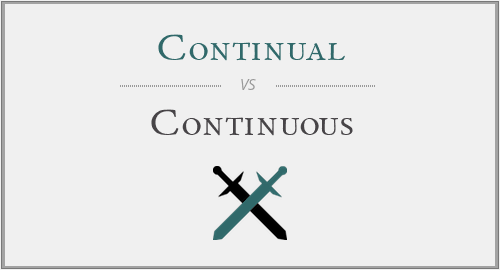Continual vs. Continuous: Navigating Temporal Concepts
When describing the uninterrupted nature of actions or events over time, the terms "continual" and "continuous" are often used, but they convey distinct temporal concepts. This article aims to clarify the differences between "continual" and "continuous," shedding light on their meanings, applications, and appropriate usage in various contexts.
Correct Usage:
Continual:
"Continual" is used to describe actions or events that occur repeatedly with intervals or breaks in between. It implies a frequent recurrence but acknowledges interruptions or pauses within the overall process.
Continuous:
Conversely, "continuous" is used to describe actions or events that occur without interruption, breaks, or gaps. It implies an unbroken and seamless flow, indicating a consistent and uninterrupted duration.
Meanings and Applications:
Continual:
Use "continual" when expressing the idea of repeated occurrences with occasional breaks. It emphasizes the ongoing nature of the action but acknowledges the presence of interruptions.
Continuous:
Use "continuous" when describing an unbroken, uninterrupted flow or duration of an action or event. It emphasizes the seamless and consistent nature of the process without any pauses.

Examples:
Correct: The construction project experienced continual delays due to unforeseen weather conditions.
Correct: The continuous rainfall led to flooding in low-lying areas.
Temporal Context:
Consider the temporal context and the presence or absence of interruptions when choosing between "continual" and "continuous." If interruptions are acknowledged, "continual" is appropriate. If there is an emphasis on uninterrupted flow, "continuous" is more fitting.
Conclusion:
Navigating the nuances between "continual" and "continuous" enables precise communication regarding the temporal nature of actions or events. Whether expressing repeated occurrences with breaks or emphasizing a seamless flow, choosing the correct term ensures clarity and accuracy in conveying temporal concepts.




Have a discussion about this article with the community:
Report Comment
We're doing our best to make sure our content is useful, accurate and safe.
If by any chance you spot an inappropriate comment while navigating through our website please use this form to let us know, and we'll take care of it shortly.
Attachment
You need to be logged in to favorite.
Log In